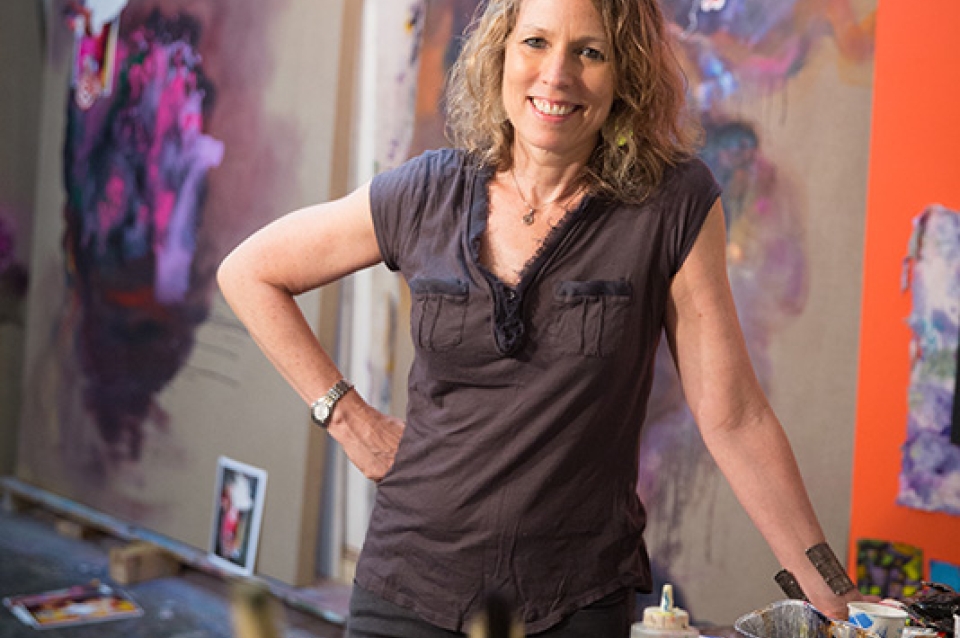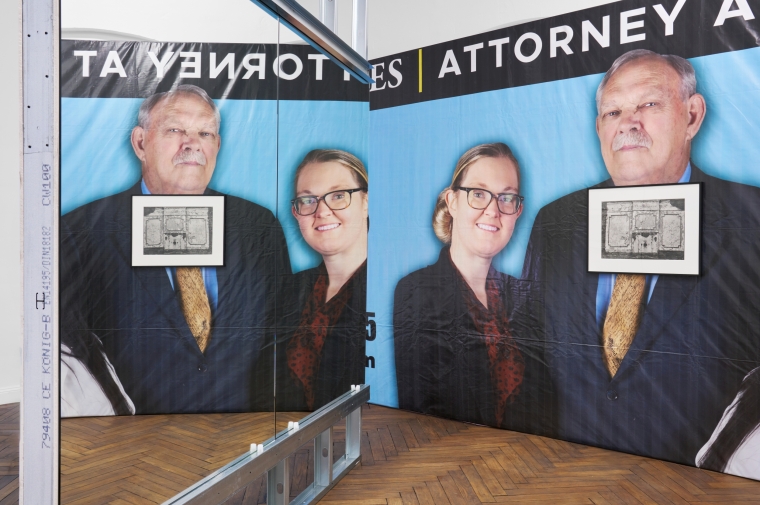December 3, 2015
Stuart Weitzman School of Design
102 Meyerson Hall
210 South 34th Street
Philadelphia, PA 19104
Get the latest Weitzman news in your Inbox
What are your students like?
“I teach both graduate and undergraduate students. I think that’s somewhat unusual at Penn in that our role in Fine Arts in PennDesign—all of us teach both graduate and undergraduate classes. With the undergraduates, I teach painting studio and a new course—it’s an interdisciplinary studio, like hybrid practice. With the graduate students, I teach a seminar called ‘Critical Issues.’ The primary mode of teaching in the graduate program in studio practice is studio visits.”
How do you adapt to those different styles of teaching?
“The big difference is that our graduate program is interdisciplinary so that means all of the faculty meet with all of the students, so I’m not just talking to painters, I’m talking to photographers and sculptors, and conceptual artists and everything in between. With the graduate students, given that they’re all independent artists who are working on developing their own voices and visions, the range of possible topics is infinite.
With the undergraduate students, it’s a little different. I teach primarily the intermediate, advanced painting studio. There are students who’ve had one semester of painting, there are students that have had three or four semesters, so I actually vary the projects and what we’re doing based on their level of familiarity, but we’re really covering everything from technical issues about how to make a painting, how to use paint, color theory, things like that. There’s also a lot of art history and references.”
Penn has art majors but isn’t an art school per se, so do students come from a much more varied intellectual background?
“There’s no limit to what can be integrated into your thinking about your art and that’s where the kind of liberal arts education and the Penn undergrad really can excel. It’s very different from teaching an art student who’s at an art school whose skills might be initially higher, but whose thinking and conceptual facilities may not be as broad. I think that one of the things that I often encounter in the hybrid studio or other classes is students through the kinds of things we’re showing them in contemporary art practice, have this ‘I didn’t know this could be art’ or ‘I didn’t know art could be X, Y, or Z.’ And so, they see that there’s a place for who they are and their diverse interests that is really unique.”
Do you have to make a transition between teaching, being in the studio with grad students, and your own work?
“Different artists work in different ways. Some artists work project to project and they have a deadline or a big exhibition and things really ramp up before then. I tend to be more consistent and work through the school year without trying to separate that and that’s important to me to have a consistent experience in the studio. I also feel lucky that my day job involves talking to people who love what I love. The range of conversation and experience that I have with the students is stimulating for me. It’s not a one-way street. If somebody is thinking about a topic in an intimate way, in order to have the right conversation with them, I might actually go do some research on something that I haven’t thought a lot about and so that enhances my own experience. Going back into my own studio, now I’ve thought about new things. Different neural pathways are being activated and so the process of teaching to me is not in any way something that I have to shut off completely. It’s a little bit more fluid.”
How do you prepare for a show?
“You work like hell. You just work all the time whenever you’re not teaching. … I tend to work all the time, and then edit and curate from what I have to make the most interesting combination of works.”
[At the time of the interview, Tileston was preparing for a solo show at the Philadelphia-based Pentimenti Gallery, which runs through Nov. 28.]


 Expand Image
Expand Image

